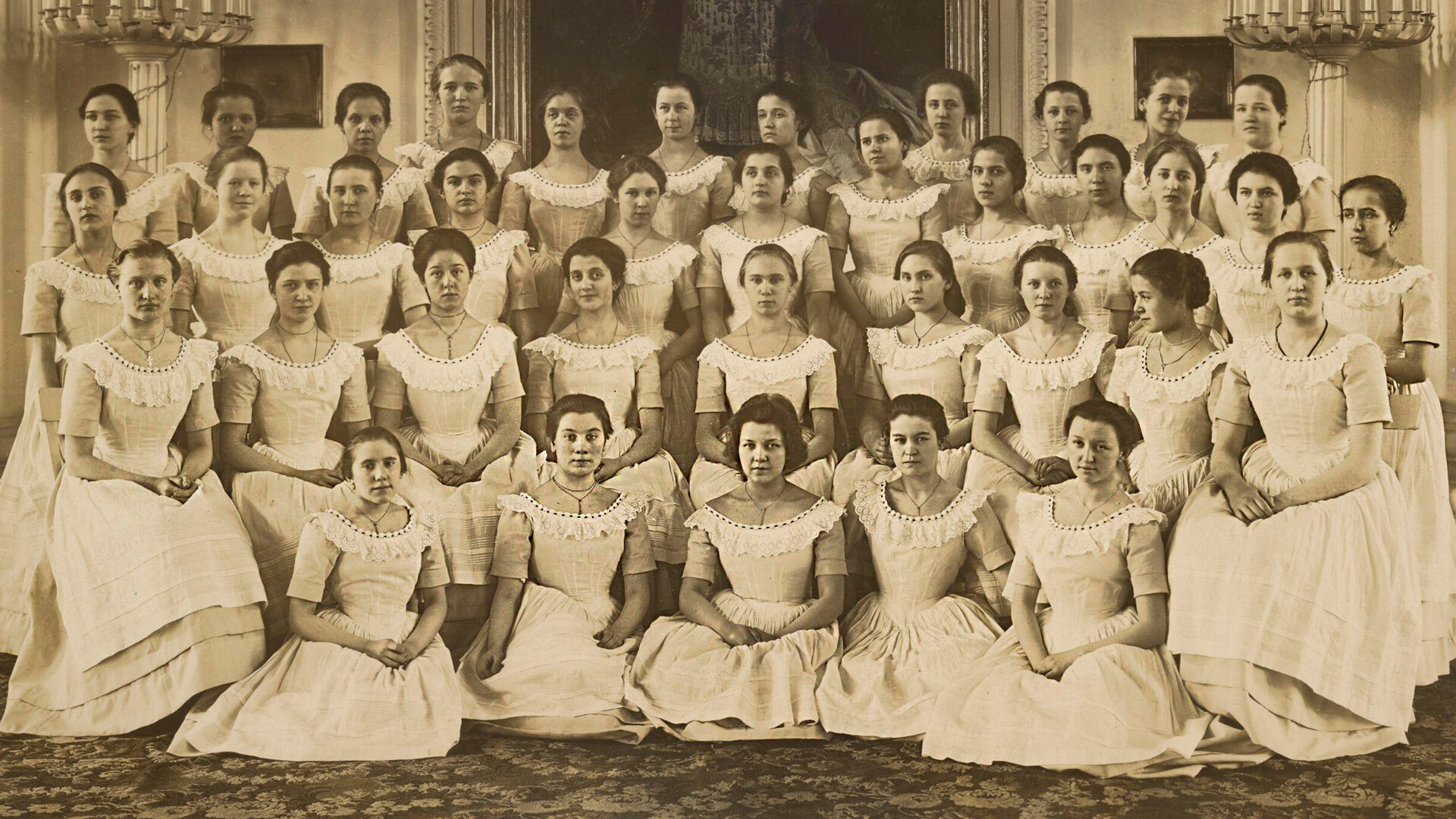
Сatherine the Great, who was inspired by the idea of spreading enlightened absolutism across all spheres of society, did not neglect the issue of female education. The Smolny Institute for Noble Maidens, founded by her in the late 18th century, was the first state educational institution for girls in Europe.
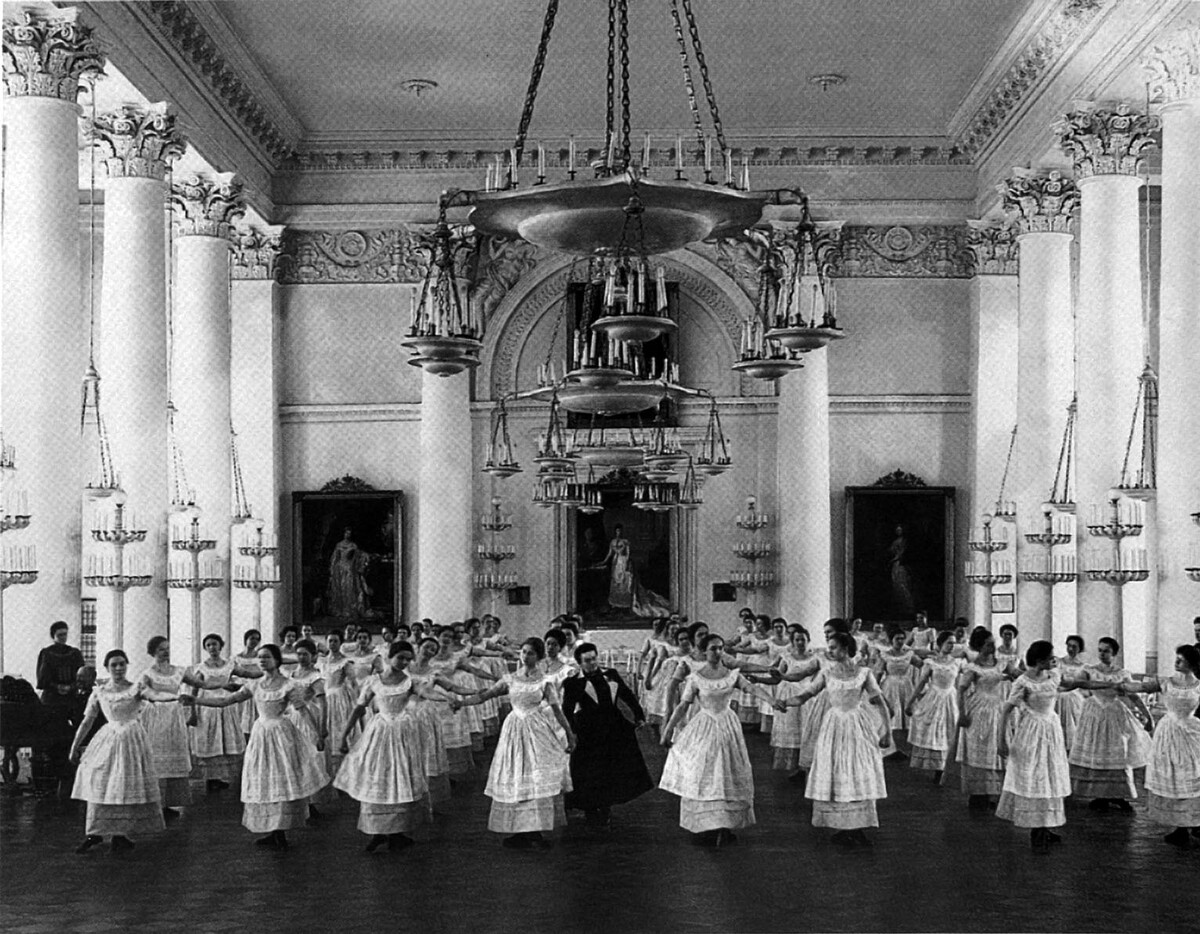
Dance classes, 1913
Karl BullaThe institutional rules were in complete contradiction to the way most aristocrats of the time saw the future of their heiresses. Smolny was designed to “overturn” outdated social conventions. Although the girls were oriented toward marriage (which, incidentally, worked out well for most of the graduates), education at the institute was supposed to form a New Age woman, capable of enhancing the environment in which she found herself and educating her children in the same enlightened spirit.
The Smolny Institute functioned as a women’s school from 1764 to 1917, but there were only minor changes in its internal organization and customs. In 1765, they began to admit “low class” girls, that is, not noblewomen (except for serfs). Pupils were divided into four age groups (girls from the ages of 6 to 18 years old were admitted to the institution), each of which was entitled to a certain colored dress: the youngest age wore a coffee colored dress, girls of the second wore blue, the third wore grayish and the oldest wore white.
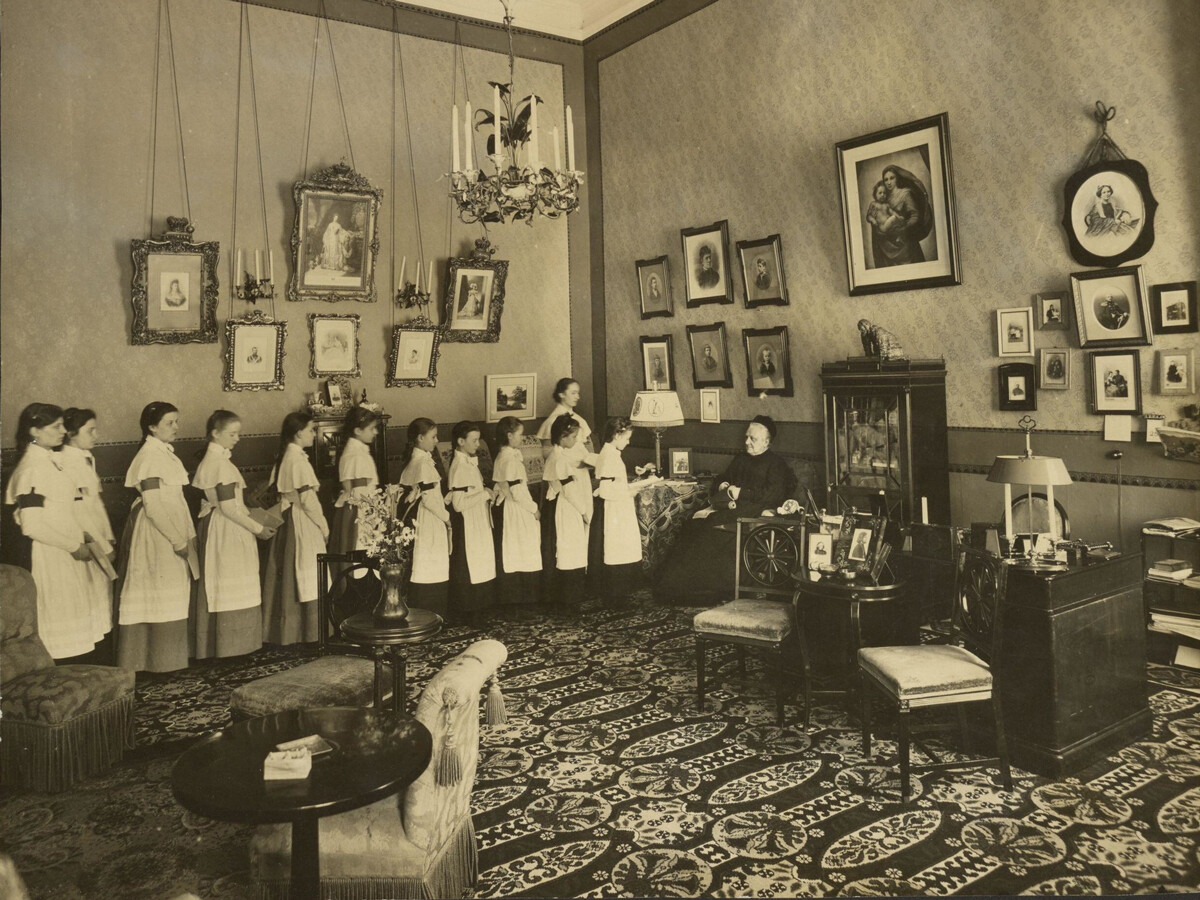
Smolny students waiting for grades
Karl BullaIn order to teach girls to walk lightly and gracefully, their shoes were made heavy and thick. After that, it became easier for the pupils to walk with grace. No jewelry was allowed, hairstyles were also the same for every age - the appearance of the pupils was ascetic, modest and neat.
The girls’ diet was also ascetic, despite their young age. In the morning, pupils drank a cup of tea and ate a small bun with butter and cheese; sometimes, the pupils mentioned porridge in their memoirs. At lunch, they had soup and a pie and, for supper, they had a bun and tea or milk again. This was not to mention the obligatory fast, during which the diet became even more restrictive.
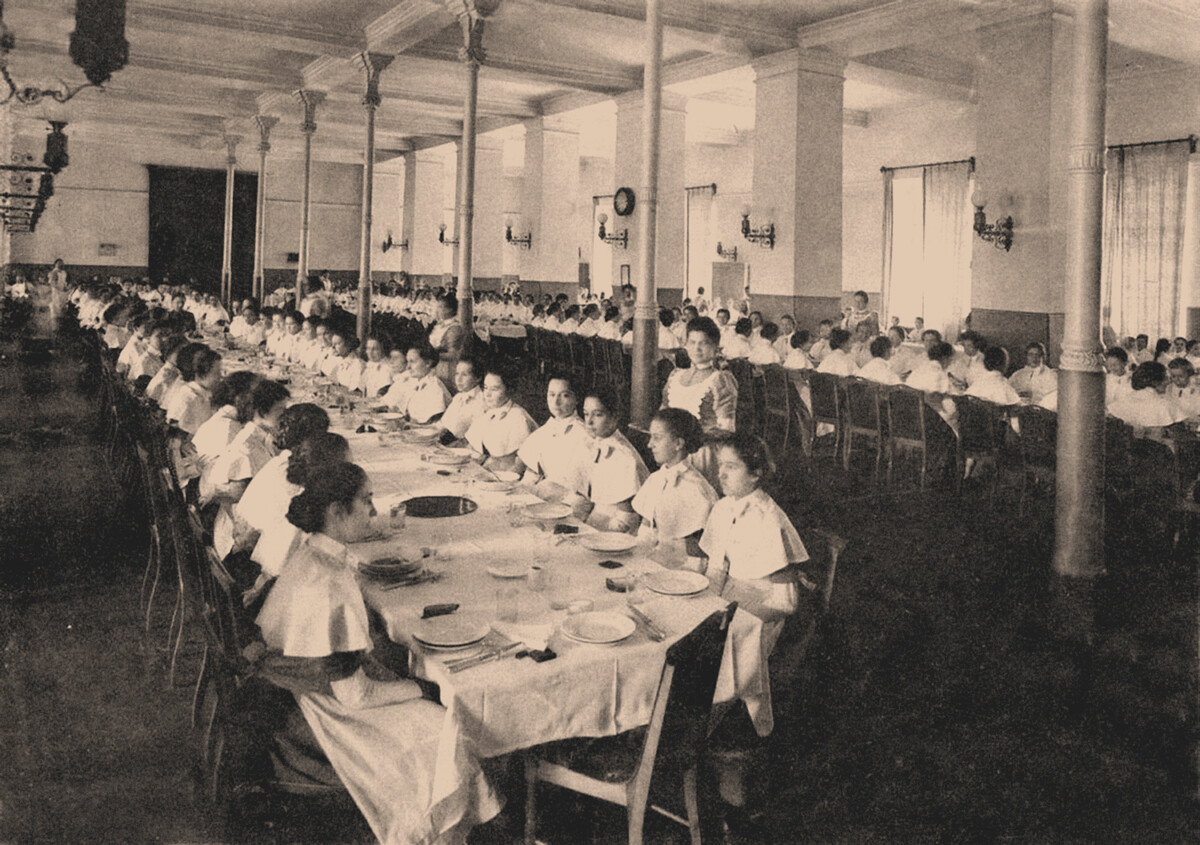
Students in the canteen, 1889
Fine Art Images/Heritage Images/Getty ImagesAlexandra Sokolova, a Smolny graduate of the 1840s, recalled meals at the Institute in this way: “…No one at the Institute was expecting the tsar (Nicholas I) that day; then, suddenly, the news which spread quickly through Smolny that he had come in from the ‘back door’ - and went not just anywhere, but to the kitchen! - left some perplexed and many others utterly frightened...
Later, we learned that the tsar approached the cauldron in which the fish soup, or rather, ukha, had just been boiled, dipped a spoon into the cauldron, tasted the rather liquid concoction and said:
- Even a cheap fish like that was spared… Well, now, what’s for the second course? Well, well… My soldiers are better fed!”
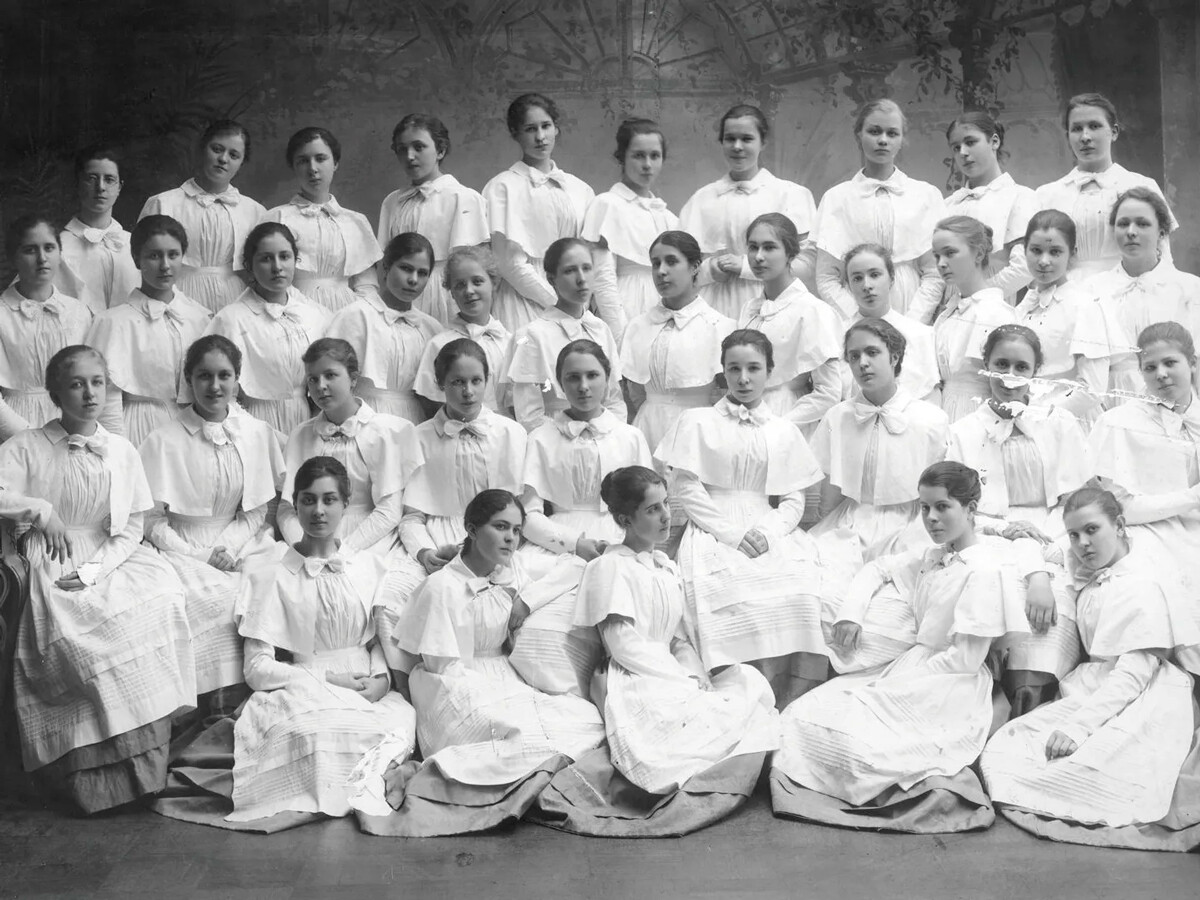
Students in 1909
Public domainSuch strictness in the upbringing of the girls was primarily due to educational guidelines (well known today in the best private schools of England, for example). The habit of contentment hardened the spirits of the girls and formed an active character, not subject to despondency and laziness, even if they had to spend the rest of their lives in luxury. Some also say that the limited diet was due to the fact that the institution was maintained at public expense (the girls’ families paid nothing for their clothes or their food) and that the kitchen staff was even stealing food.
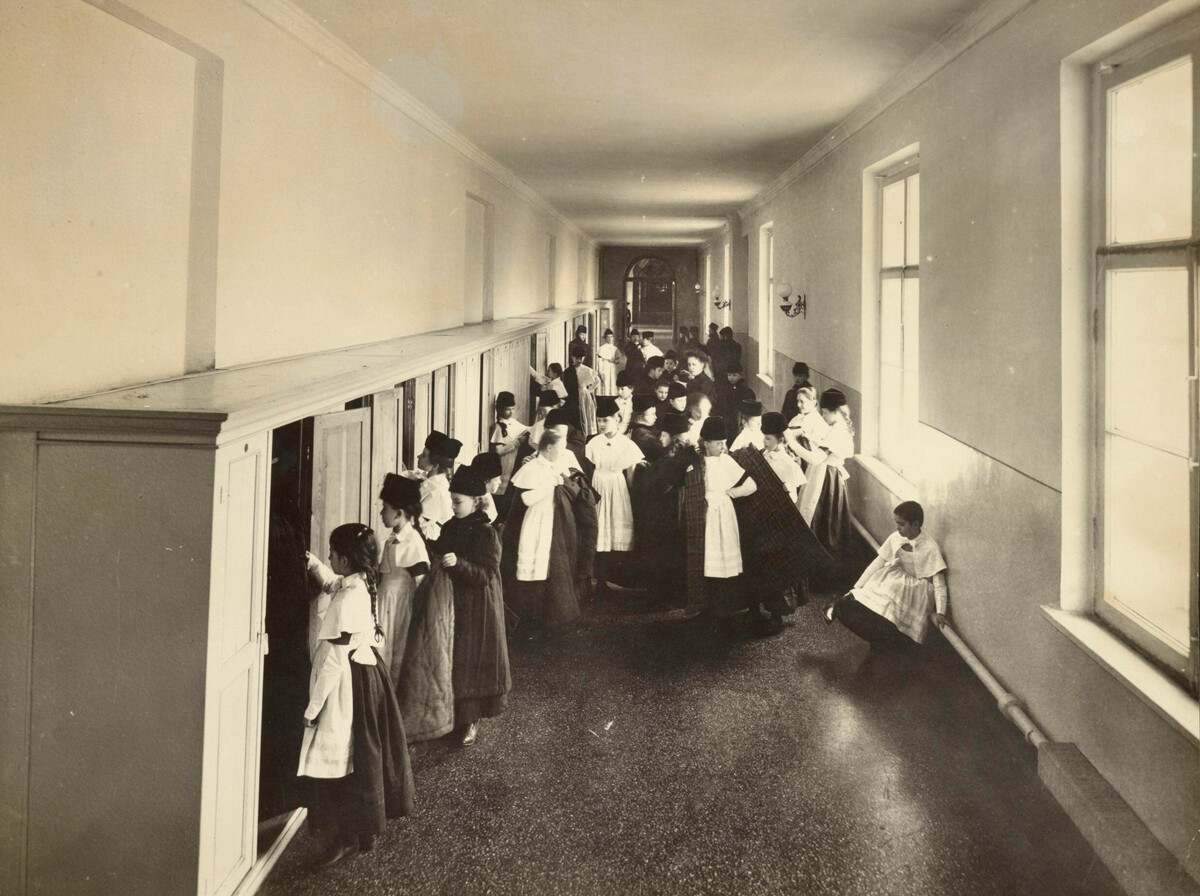
Maidens during the break
Legion MediaRelatives were allowed to send the girls parcels consisting of money and goodies. It was customary to share the food with less fortunate friends. And, with the money received through the guards, one could buy more pastries and bread (the treasures were kept safely hidden from the inspectors in the dormitory).
In the “bourgeois” half of Smolny (‘Aleksander’), girls of lower descent lived and studied: daughters of officials, not of nobles, merchants and bankers.
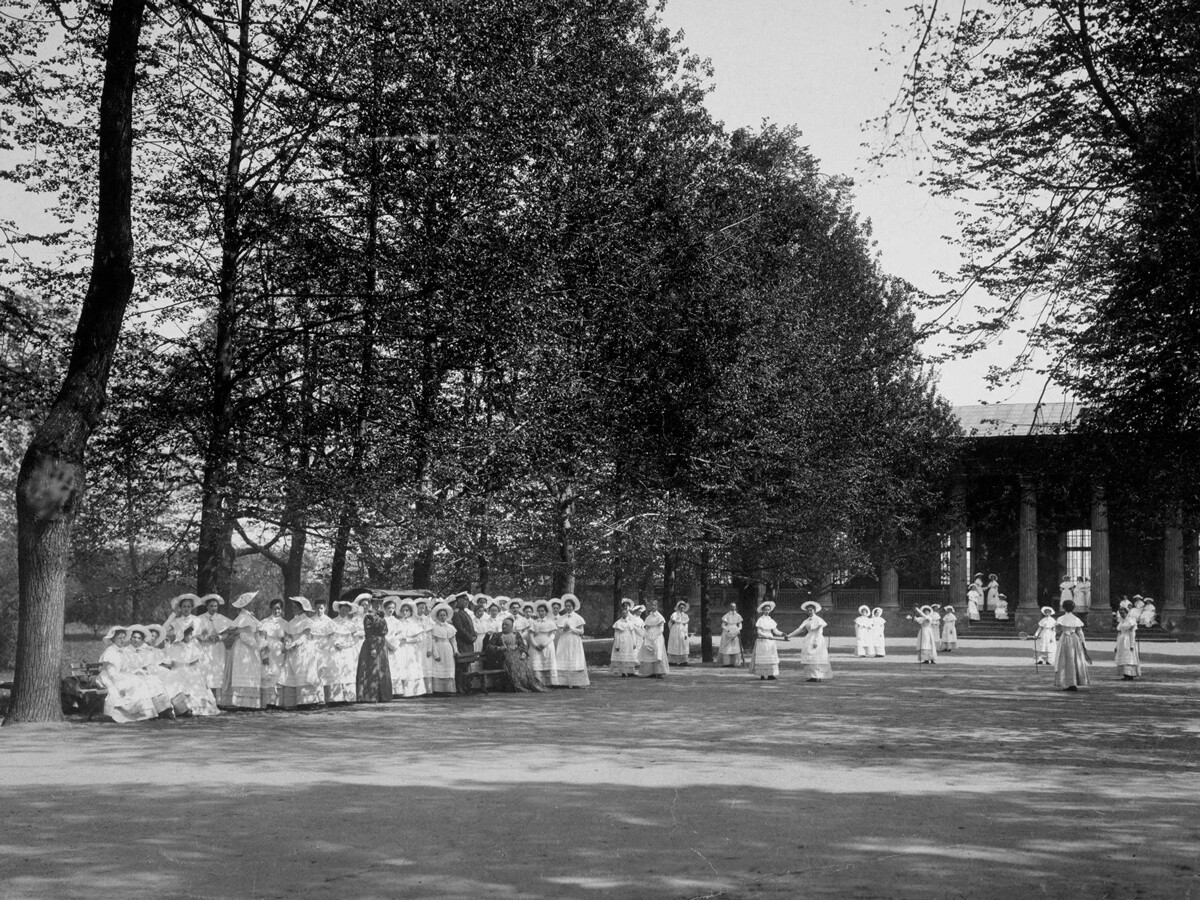
Students playing tennis, 1913
Karl BullaResidents of the noble half (the ‘Nicholas’ half) had certain advantages over their neighbors from the bourgeois ‘Alexander’ half. Twice a year, they would go for rides in court carriages with a ceremonial escort of officers, take imperial examinations, which were attended by representatives of the royal family, and attend imperial balls, where they danced with grand dukes and foreign princes. Inside the institute, when meeting with a noble girl, a bourgeois girl had to curtsy first and only then she was answered in the same way.
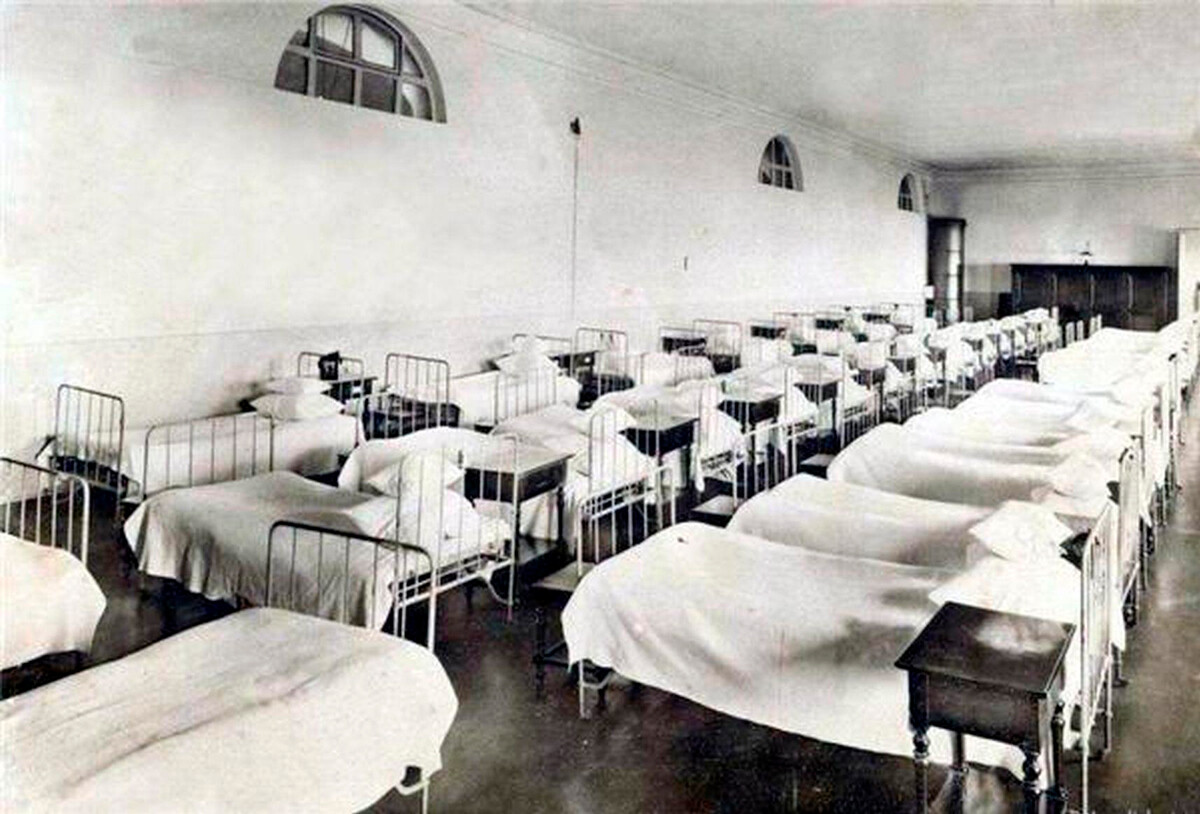
Smolny's bedroom
Legion MediaIn other respects, however, the living conditions of the two halves were very similar. The girls were housed in rooms that looked like barracks. About 10 girls lived in one dormitory, with only a bed with a hard mattress, a small bedside table and a chair each. The dormitories were particularly harsh to live in during the winter - the temperature could drop as low as 10 degrees Celsius and the girls had to sleep under thin blankets and bathe in freezing cold water early in the morning. Many, especially the newcomers, fell ill.
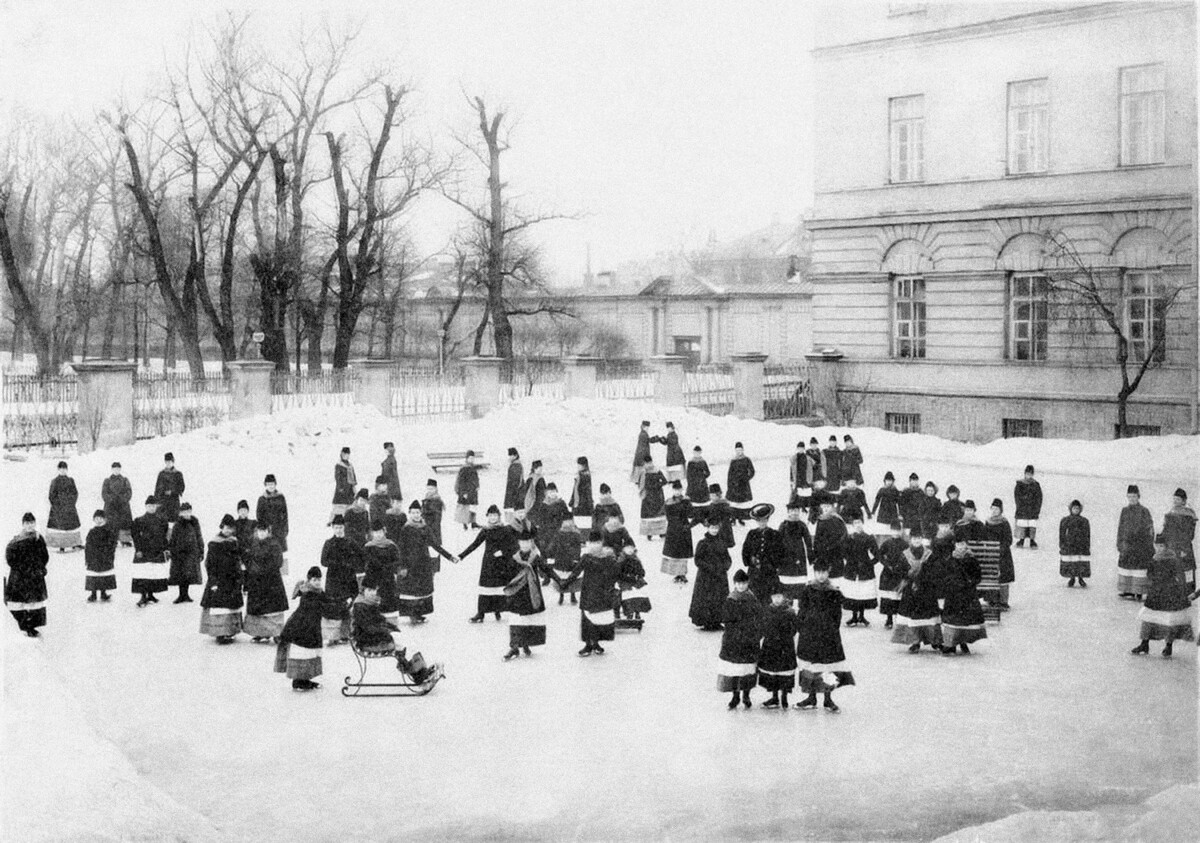
The Smolny noble maidens at the ice rink, c. 1913
Karl Bulla / Fine Art Images/Heritage Images/Getty ImagesBut, even in such an unhappy event, the girls found an outlet: the infirmary was warm, they could sleep and were provided with at least a little more nourishing food. Because of this, the most adventurous young ladies even simulated illnesses.
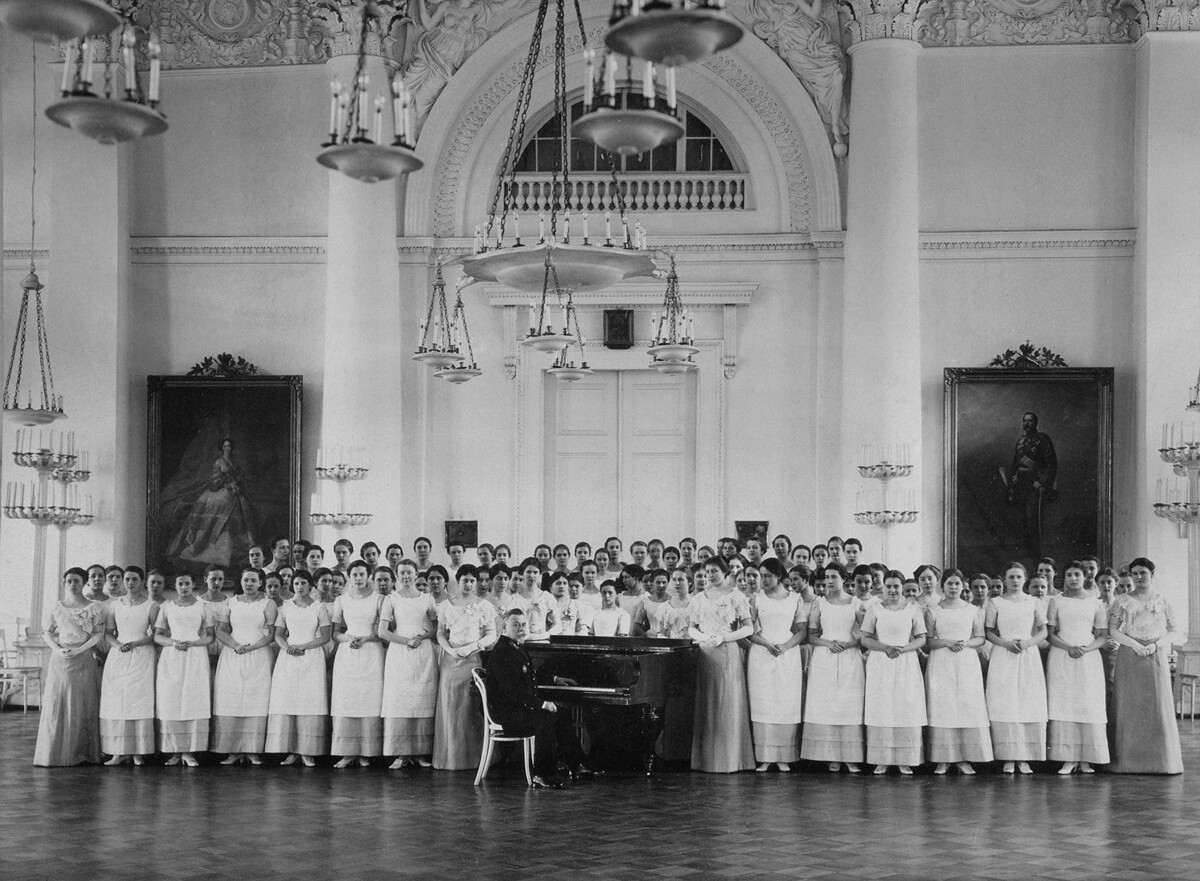
Music lesson, c. 1913
Karl Bulla / Fine Art Images/Heritage Images/Getty ImagesDoctors and teachers were the only men the girls saw on a regular basis for the entire 12 years of their stay. When they came to the institute at age six, they did not leave it until graduation, because no vacations were allowed (over time, the length of stay was reduced several times). The teachers were deliberately chosen to be married men, not young, and preferably physically impaired, so as not to distract the maidens. But this did not help, and these only available men still became the object of adoration. The girls cut off pieces of their coats to carry around with them, doused their hats with their perfume, and did many other stupid things of the same kind.
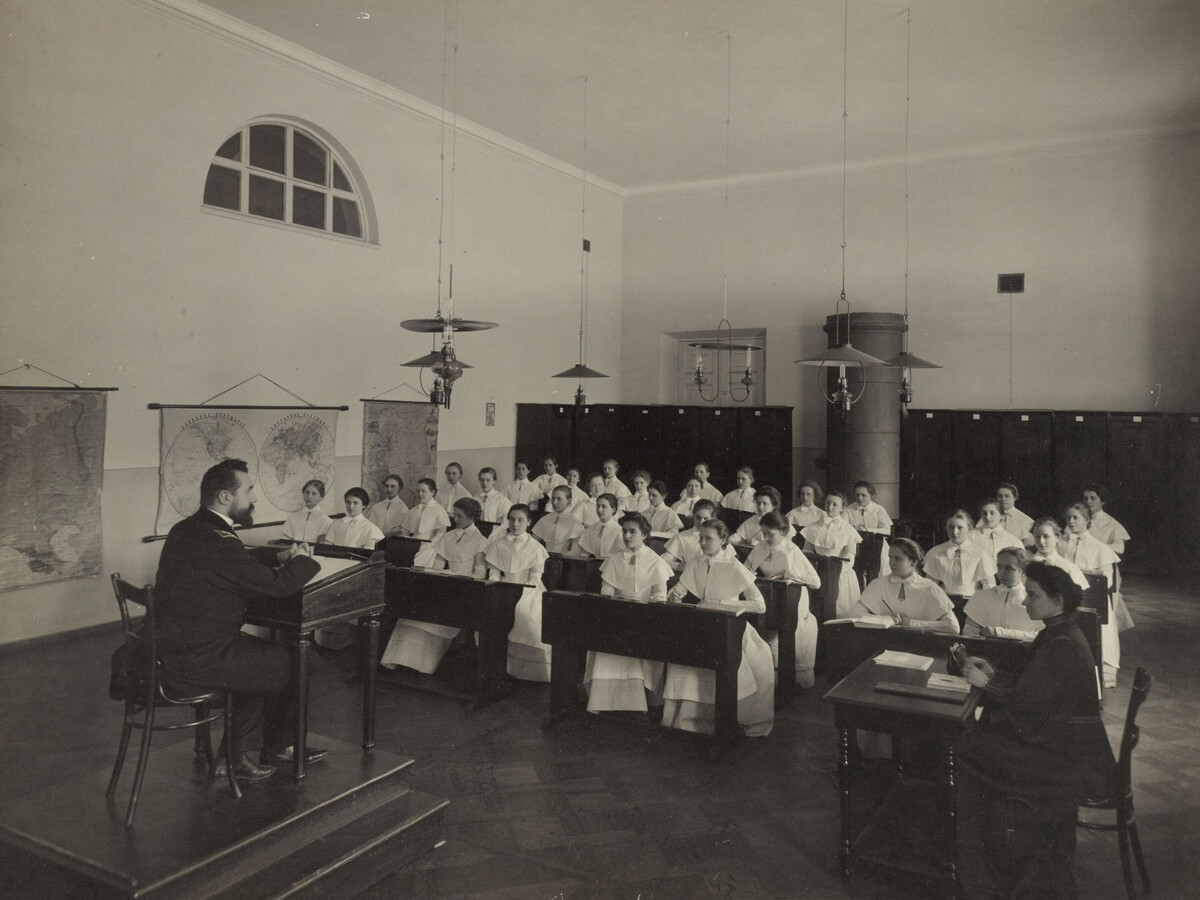
Geography lesson
Karl BullaIt was also common to adore one of the older female students. Each junior female student chose her own idol and showed her affection in ways that may seem rather strange today. To prove their affection, the girls may have eaten a bar of soap or done something worse. Fortunately, more often adoration was limited to petty favors and praise.

Painting lesson, 1889
Fine Art Images/Heritage Images/Getty Images“To ‘adore’ is to try to see the adored object, which was usually from the upper-class maidens and, when she passes by, to shout after her: ange, beauté, incomparable, céleste, divine et adorable, (of course, not in front of the class lady), then to write the adored name on books and notebooks with exclamation marks and adding the same words,” Maria Sergeyevna Uglichaninova, a Smolny pupil in the 1840s, once wrote.
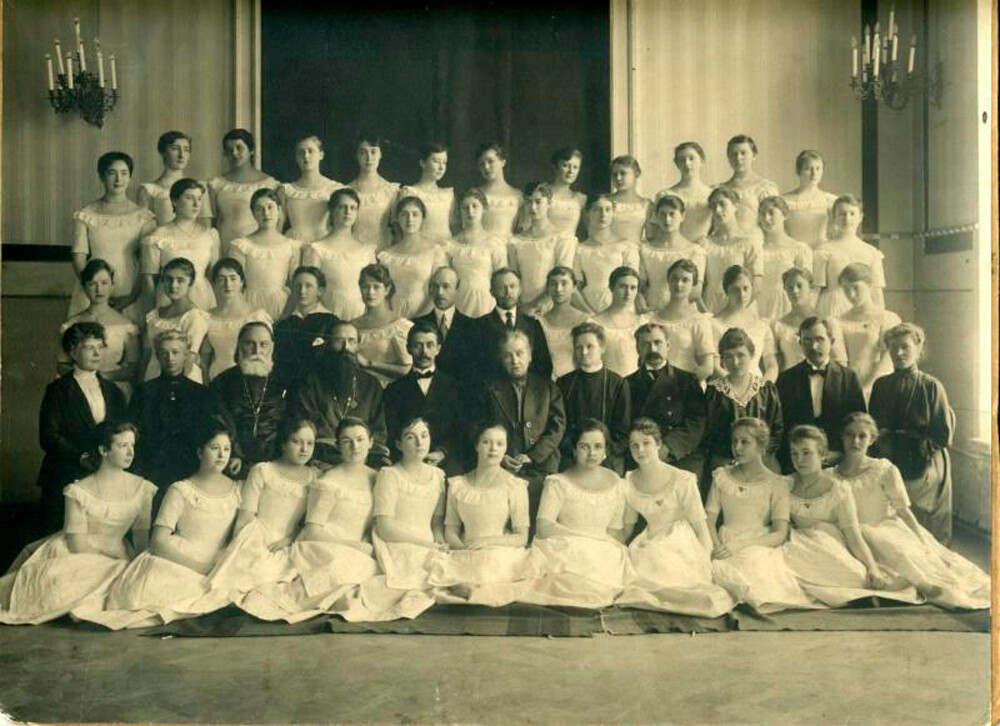
Group portrait of students and teachers of the last graduating class, 1918
MAMM/MDFThe girls could meet their parents only in the presence of the class ladies and all of their correspondence was read. Smolny was a totally enclosed environment, from which escaping was almost impossible. However, physical punishment was strictly forbidden, so girls who had been guilty were publicly shamed for misconduct: a note was pinned to their dress if a pupil passed it in class; they were deprived of their aprons and lunch. And seniors were forbidden to wear adult dresses and hairstyles as a form of punishment.
Dear readers,
Our website and social media accounts are under threat of being restricted or banned, due to the current circumstances. So, to keep up with our latest content, simply do the following:
If using any of Russia Beyond's content, partly or in full, always provide an active hyperlink to the original material.
Subscribe
to our newsletter!
Get the week's best stories straight to your inbox